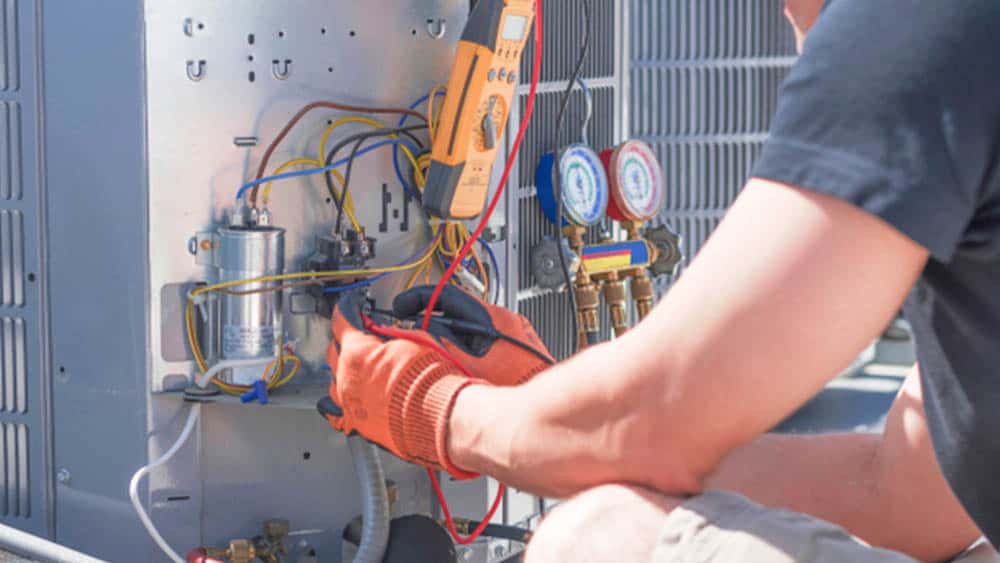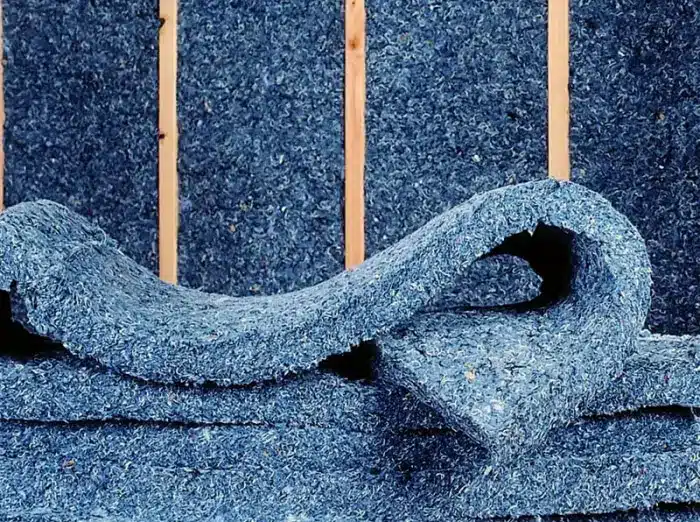If you cook frequently and need to do a lot of food processing, then a food processor is a good investment. However, if you only cook occasionally and do not need to do a lot of food processing, then a food processor may not be worth the cost.
A food processor is a versatile kitchen appliance that can chop, shred, slice, grate, puree, and knead dough.
It is powered by an electric motor that drives a series of blades or discs. The type of blade or disc that is used determines the type of food processing that is done.
Table of contents
- What to Make With a Food Processor
- What is a food processor used for?
- What Are the Main Components of A Food Processor?
- How to Use Your Food Processor
- How a Food Processor Works
- Can you use a food processor in place of a blender?
- How is a food processor different from a blender?
- How often should I clean my food processor?
- Is a food processor worth it?
- Do I really need a food processor?
- Tips for Using a Food Processor
- Safety Tips for Using a Food Processor
- Conclusion
- FAQs
What to Make With a Food Processor
Chopped vegetables: Use the S-blade to chop vegetables into small pieces. This is a great way to prepare vegetables for soups, stews, and stir-fries.
Sliced vegetables: Use the slicing disc to slice vegetables into thin, even pieces. This is a great way to make salads and garnishes.
Shredded vegetables: Use the shredding disc to shred vegetables into thin strips. This is a great way to make coleslaw and potato pancakes.
Grated cheese: Use the grating disc to grate cheese into fine shreds. This is a great way to add cheese to pasta dishes and pizzas.
Kneaded dough: Use the dough blade to knead dough for bread, pizza, and pastries. This is a much faster and easier way to knead dough than by hand.
Puréed soups and sauces: Use the S-blade to purée soups and sauces. This is a great way to make smooth, creamy soups and sauces.
Hummus: Use the S-blade to make hummus. Simply add chickpeas, tahini, lemon juice, garlic, and olive oil to the bowl and process until smooth.
Nut butter: Use the S-blade to make nut butter. Simply add nuts to the bowl and process until smooth.
Salsa: Use the S-blade to make salsa. Simply add tomatoes, onions, peppers, cilantro, and lime juice to the bowl and process until chunky
Related Post: How to Clean a DVD | Full Guide
What is a food processor used for?
A food processor is a versatile kitchen appliance that can be used for a variety of tasks, including:
Chopping and slicing: A food processor can quickly and easily chop or slice fruits, vegetables, herbs, and other ingredients. This is a great way to save time when preparing meals.
Shredding and grating: A food processor can also be used to shred or grate cheese, carrots, and other hard ingredients. This is a great way to add texture to dishes, such as salads and casseroles.
Puréeing and blending: A food processor can be used to purée or blend soups, sauces, smoothies, and other foods. This is a great way to create smooth and creamy textures.
Kneading dough: A food processor can also be used to knead dough. This is a great way to make bread, pizza dough, and other pastries.
Grinding nuts and seeds: A food processor can also be used to grind nuts and seeds. This is a great way to make homemade nut butter or to add texture to dishes.
In addition to these tasks, a food processor can also be used to make dips, spreads, and other sauces. It is a versatile appliance that can be used to make a variety of dishes.
What Are the Main Components of A Food Processor?
here is an overview of the main components of a food processor and how to use it:
Base: The base of the food processor houses the motor and electrical components. It is typically made of heavy-duty plastic or metal and has rubber feet to prevent it from sliding on the countertop.
Work Bowl: The work bowl is the container where you place the ingredients you want to process. It is typically made of clear plastic or stainless steel and has a capacity of 3 to 14 cups.
Lid: The lid fits securely on top of the work bowl and has a hole in the center for the feed tube. It has a locking mechanism to prevent the lid from popping off while the processor is in operation.
Feed Tube: The feed tube is a small opening in the lid that allows you to add ingredients to the work bowl while the processor is running. It has a pusher tool that helps you guide the ingredients into the blades.
Blades: The blades are the sharp, cutting components of the food processor. They are typically made of stainless steel and come in a variety of shapes and sizes for different purposes.
Drive Adaptor: The drive adaptor is a small plastic or metal piece that connects the blades to the motor shaft. It ensures that the blades rotate properly.
Control Panel: The control panel is located on the base of the food processor and has buttons or switches for different functions, such as turning the processor on or off, selecting the speed, and using different blade attachments.
How to Use Your Food Processor
Assemble the food processor: Make sure the work bowl is securely attached to the base. Insert the drive adaptor and attach the desired blade. Place the lid on the work bowl and lock it in place.
Add ingredients: Add the ingredients you want to process to the work bowl. Do not fill the bowl more than 2/3 full.
Choose a setting: Select the appropriate speed or setting for your task. Most food processors have a pulse button for short bursts of processing and a continuous run function for longer processing.
Turn on the processor: Press the power button to turn on the food processor.
Process ingredients: Use the pulse button or continuous run function to process the ingredients until they reach the desired consistency.
Turn off the processor: Press the power button to turn off the food processor.
Remove ingredients: Carefully remove the lid and take out the processed ingredients.
Related Post: Denim Insulation vs. Fiberglass Insulation | How Denim Insulation Works
How a Food Processor Works
A food processor works by using a rotating blade or disc to chop, shred, slice, or dice food. The blade or disc is attached to a shaft that is driven by a motor. The speed of the motor can be adjusted to control the size of the pieces of food that are produced.
Can you use a food processor in place of a blender?
You can use a food processor in place of a blender for some tasks, but it is not a perfect substitute. Food processors are not as powerful as blenders, so they may not be able to puree ingredients as finely.
Additionally, food processors have a larger bowl than blenders, so they may not be as well-suited for small tasks.
In general, a food processor is a good choice for tasks that require evenly chopped or shredded ingredients. A blender is a good choice for tasks that require smooth purees, such as smoothies and soups.
If you are only going to buy one appliance, a blender is a more versatile choice. However, if you frequently cook dishes that require chopped or shredded ingredients, a food processor is a worthwhile investment.
Related Post: Top 30 inspirational commercials that sold out their products.
How is a food processor different from a blender?
While food processors and blenders are both versatile kitchen appliances, they serve distinct purposes and have different strengths and weaknesses.
Food Processor:
Designed for chopping, slicing, and shredding: Food processors excel at uniformly chopping, slicing, and shredding vegetables, fruits, nuts, and other ingredients.
Their sharp blades and powerful motors can handle a variety of tasks, making them ideal for making salsa, hummus, pesto, and other chunky or textured dishes.
Less effective for smooth blending: While food processors can blend certain foods like soups and dips, they are not as well-suited for creating perfectly smooth purees or liquids. Their blades tend to break down ingredients into smaller pieces rather than fully blending them into a homogenous consistency.
Recommended cleaning frequency: Regular cleaning after each use is crucial to maintain the performance and longevity of a food processor. Rinse the bowl, blades, and lid under running water to remove loose food particles, and use a mild dish soap and sponge if needed. Deep clean the appliance every few weeks or if stubborn food residue builds up.
Blender:
Specialization in blending: Blenders are masters of creating smooth, creamy purees and smoothies.
Their high-powered motors and rotating blades can effectively blend fruits, vegetables, ice, and other ingredients into a uniform consistency, making them ideal for milkshakes, fruit smoothies, and thick sauces.
Limited chopping and shredding capabilities: Blenders are less capable of chopping or shredding ingredients compared to food processors. Their blades are primarily designed for blending, so they may not perform well for tasks that require precise cutting or shredding.
Recommended cleaning frequency: Blenders should also be cleaned promptly after each use to prevent lingering food odors and buildup.
While the main jar and blades can be rinsed under running water, occasionally use a mild dish soap and sponge to thoroughly clean the interior of the jar and the base of the blender.
In summary, food processors are better suited for chopping, slicing, and shredding tasks, while blenders excel at creating smooth purees and liquids. Both appliances are essential kitchen tools, and the choice between them depends on specific cooking needs and preferences.
Related Post: How to Get Rust Off Stainless Steel
How often should I clean my food processor?
In general, you should clean your food processor after each use to prevent food debris from building up and becoming difficult to remove. This will help to maintain the appliance’s performance and ensure that it is sanitary. Here’s a breakdown of how often to clean different parts of your food processor:
Right after each use:
Rinse the bowl and blades under running water to remove most of the food debris.
If stubborn food particles remain, use a non-abrasive sponge or brush to gently scrub them off.
Deep cleaning every few uses or as needed:
Disassemble the food processor and wash all of the parts separately.
Use a mild dish soap and warm water for the main body and blades.
For stubborn stains or odors, you can use a dishwasher or a cleaning solution specifically designed for food processors.
Regular maintenance:
After every deep cleaning, dry all of the parts completely with a clean towel or cloth.
Store the food processor in a cool, dry place when not in use.
Here are some additional tips for cleaning your food processor:
If you are processing ingredients that tend to stain, such as red beets or tomatoes, add a tablespoon of lemon juice or vinegar to the food processor bowl to help neutralize the color.
For foods that are particularly sticky, such as nuts or dough, try adding a tablespoon of vegetable oil to the bowl before processing.
If you find that food particles are clinging to the blades, you can soak them in warm, soapy water for a few minutes before scrubbing them.
Related Post: How Sump Pumps Work | Full Guide and Details
Is a food processor worth it?
Whether or not a food processor is worth it depends on your individual needs. If you cook frequently and often chop, shred, slice, grate, puree, or knead dough, then a food processor can be a valuable investment.
However, if you only cook occasionally and do not need to do a lot of food processing, then a food processor may not be worth the cost.
Do I really need a food processor?
You can certainly do without a food processor. Many of the tasks that a food processor can do can also be done by hand, such as chopping, slicing, and grating. However, a food processor can make these tasks much easier and faster.
It can also be used to do tasks that are difficult or impossible to do by hand, such as kneading dough and puréeing food.
Tips for Using a Food Processor
- Cut food into evenly sized pieces before processing.
- Pulse the food until it is the desired texture. Do not over-process the food, as this can result in a mushy or puréed texture.
- Use the appropriate blade or disc for the task at hand.
- Do not fill the bowl more than two-thirds full.
- Clean the food processor after each use.
Related Post: Wake Robin: All You Need To Know About The Plants
Safety Tips for Using a Food Processor
- Always unplug the food processor before attaching or removing blades or discs.
- Do not touch the blades or discs while the food processor is running.
- Do not use the food processor to process hot liquids.
- Keep children away from the food processor while it is in use.
Conclusion
A food processor is a versatile kitchen appliance that can save you time and effort in the kitchen. If you are considering buying a food processor, think about how often you cook and how often you need to do food processing.
FAQs
A food processor is designed to chop, slice, shred, grate, mince, puree, and knead food. A blender is designed to blend liquids, such as smoothies and soups.
A food processor can be used for a variety of tasks, including chopping nuts or herbs, puréeing soups, making dough, shredding cheese, and slicing vegetables.
The best way to clean a food processor is to wash the bowl, lid, and blades in warm, soapy water. The base unit can be wiped down with a damp cloth.
References
- home.howstuffworks.com/food-processor
- kitchenaid.com/what-is-food-processor-used-for
- techradar.com/how-does-a-food-processor-work
- kitchencuddle.com/how-does-a-food-processor-work/





